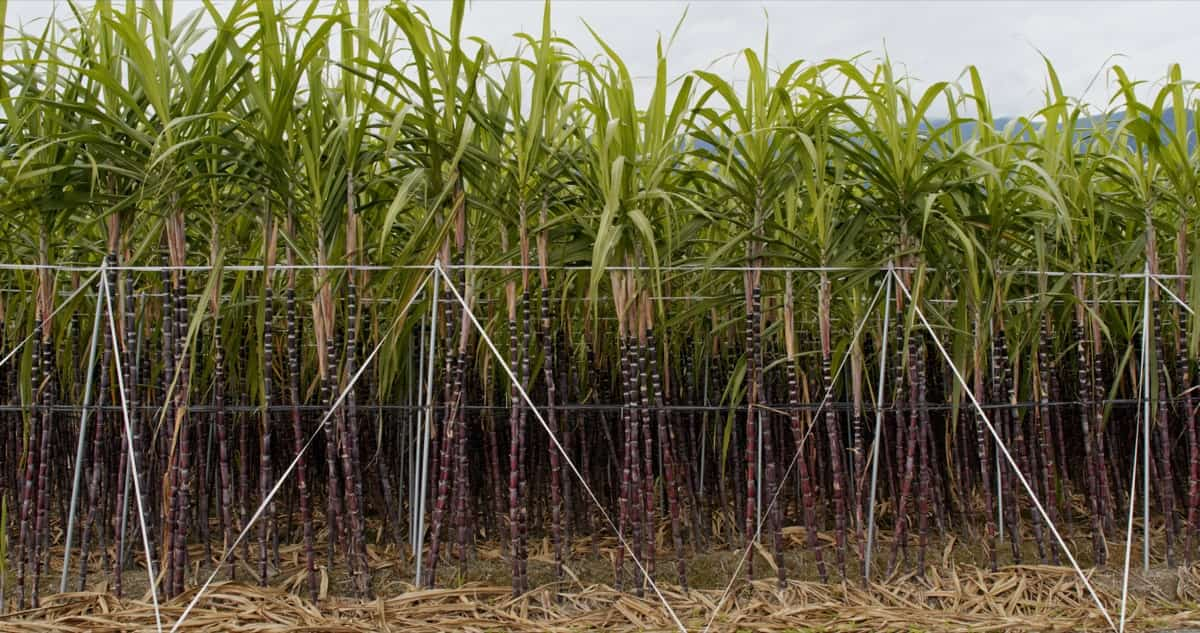Sugarcane cultivation has been practiced for centuries, providing a vital source of income for countless farmers worldwide. Understanding the specific fertilizer requirements for sugarcane can help farmers optimize their yield and ensure sustainable cultivation practices. Proper timing of fertilizer application is equally important for maximizing sugarcane yield.

Sugarcane Fertilizer Requirements and Recommendations
Best Fertilizer Management Practices for Sugarcane
- It is important to conduct a soil test before planting sugarcane. This will provide valuable insights into the nutrient composition of your soil and guide you in determining the appropriate fertilizer requirements. Based on the test results, you can customize your fertilization plan to meet the specific needs of your crop.
- To ensure balanced nutrient management, consider combining organic and inorganic fertilizers. Organic options such as compost or manure supply essential nutrients and improve soil health and structure. Inorganic fertilizers offer precise control over nutrient application rates.
- Applying fertilizers evenly across the field is essential for uniform plant growth and development.
- Regular monitoring of plant health is crucial for effective fertilizer management.
Sustainable Fertilizer Management Techniques for Sugarcane
- Sugarcane is a vital crop that plays a significant role in the global sugar industry. Sustainable fertilizer management techniques are crucial for sugarcane cultivation to ensure optimal yield and quality.
- Soil testing helps determine the nutrient status of the soil. This approach prevents the overuse of fertilizers and minimizes nutrient runoff into water bodies.
- Furthermore, adopting integrated nutrient management approaches can ensure efficient usage of available resources while maintaining soil fertility levels. This involves combining organic sources with mineral fertilizers based on crop demand at different growth stages.
Optimal Nutrient Application for Sugarcane Cultivation
- Nitrogen is one of the most important nutrients for sugarcane. It plays a critical role in plant growth and development. Therefore, it’s important to strike a balance by applying nitrogen at different stages of growth.
- Phosphorus is another vital nutrient that helps root development and overall plant vigor. Adequate phosphorus levels are especially crucial during the early stages of sugarcane growth when root establishment occurs.
- Potassium promotes disease resistance and enhances water uptake efficiency in sugarcane plants. It also contributes to improved sugar content within the stalks. Applying potassium fertilizers at regular intervals throughout the growing season ensures optimal absorption by the crop.
- In addition to these primary macronutrients, secondary macronutrients like calcium and magnesium are also necessary for healthy sugarcane production. These micronutrients help in enzyme activation, cell wall formation, and photosynthesis process regulation, among other functions vital for robust plant growth.
- To achieve optimal nutrient application rates specific to your region or variety of sugarcane being grown, consulting with local agricultural experts or extension services can be extremely helpful as they often have detailed fertilizer recommendations based on local conditions.
Fertilizer Scheduling for Maximizing Sugarcane Yield
An initial application of 60 kg/ha should be made at the onset of tillering. This early dose sets a strong foundation for growth and development. It provides the necessary nutrients to support healthy tiller formation and establishment.
Following this initial application, 40 kg/ha doses should be applied every 30 days until the maximum recommended nitrogen amount is reached. By splitting up the nitrogen applications in this way, we ensure a continuous supply of nutrients throughout the growing season. This approach allows for better nutrient uptake by sugarcane plants as they can absorb smaller amounts more efficiently.
Nutrient Requirements and Fertilization Strategies for Sugarcane
- Applying fertilizer directly to the soil or through foliar sprays ensures efficient utilization by sugarcane crops. In addition to chemical fertilizers, organic options can also be utilized to promote sustainable sugarcane farming practices. Organic materials like compost or manure provide nutrients and improve soil structure and fertility.
- Proper monitoring of nutrient levels in the soil through regular testing helps determine if any adjustments need to be made in fertilization strategies. This ensures that the right amount of nutrients is applied at each growth stage without wastage or deficiency.
- By understanding the nutrient requirements specific to sugarcane crops and implementing effective fertilization strategies, farmers can achieve higher yields while maintaining sustainability in their agricultural practices.
In case you missed it: Integrated Nutrient Management: Practices for Maximizing the Sugarcane Yield

Fertilizer Application Methods for Sugarcane Crops
- Applying fertilizers in the right way is crucial for maximizing the yield of sugarcane crops. Broadcasting is spread evenly across the entire field using a mechanical spreader. This allows for uniform distribution of nutrients, ensuring that all plants receive an adequate amount.
- Precision application is a technique that combines irrigation and fertilizer application. Injecting liquid fertilizers directly into the irrigation system ensures precise and targeted delivery of nutrients to each plant.
- Additionally, foliar feeding has gained popularity among sugarcane growers. In this method, liquid fertilizers are sprayed onto the leaves of sugarcane plants. The nutrients are absorbed through stomata on leaf surfaces and quickly transported to different plant parts.
- It’s important to note that choosing an appropriate fertilizer application method depends on various factors such as soil type, climate conditions, crop stage, and available resources. Farmers should consult agronomists or agricultural experts to determine the best method for their needs.
- By adopting proper fertilizer application methods suited to their farming conditions, sugarcane growers can enhance nutrient efficiency while minimizing wastage – ultimately leading to healthier crops with higher yields.
Balanced Nutrient Management in Sugarcane Farming
It is crucial for maintaining the health and productivity of sugarcane crops. It is important to know the specific nutrient requirements of sugarcane at different stages of growth. During the early stages, nitrogen is vital in promoting vigorous vegetative growth. As the crop matures, phosphorus becomes more important for root development and plant vigor. Potassium is also essential throughout all stages as it helps with water regulation and disease resistance.
Soil testing should be conducted regularly to assess nutrient levels and pH levels. Based on these results, fertilizer applications can be tailored accordingly to meet the specific needs of each field. Another key aspect of balanced nutrient management is using organic matter.
Organic Fertilizer Options for Sustainable Sugarcane Cultivation
- Compost – It is made from decomposed plant and animal materials. It enriches the soil with a wide range of nutrients while enhancing its moisture retention capacity. Additionally, it promotes beneficial microbial activity, leading to healthier root systems and increased nutrient absorption by the sugarcane plants.
- Cow dung or poultry litter – It is rich in nitrogen, phosphorus, and potassium; these organic sources offer a balanced nutrient profile essential for optimal sugarcane growth. Moreover, they contribute to improving soil structure and increasing water-holding capacity.
- Green manures – They can play a vital role in sustainable sugarcane farming practices. By growing leguminous cover crops like clover or vetch during fallow periods or between rows of cane plants, farmers can add nitrogen back into the soil naturally through biological nitrogen fixation.
Fertilizer Recommendations for Different Stages of Sugarcane Growth
- Pre-Planting Stage: Before planting sugarcane, it is essential to prepare the soil by incorporating organic matter and applying a balanced fertilizer blend with nitrogen (N), phosphorus (P), and potassium (K). A recommended ratio could be 200–150–150 kg NPK ha−1.
- Early Growth Stage: During the early growth, provide sufficient nitrogen to promote vigorous shoot development. Split applications of nitrogen can be beneficial, with around 30% applied at planting and the remaining amount divided into subsequent applications during this stage.
- Tillering Stage: As tillers start emerging from the base of the plant, it is vital to maintain a steady supply of nutrients such as phosphorus and potassium alongside continued nitrogen application. This helps in promoting healthy tiller formation and root development.
- Growth Stage: When maximum leaf area is reached, maintaining an adequate supply of all macronutrients becomes crucial for optimal photosynthesis and sugar accumulation in stalks. Regularly monitoring leaf nutrient levels can help identify deficiencies that need correction.
- Maturation Stage: During maturation, reducing nitrogen inputs while increasing potassium supplies can enhance sucrose content within stalks while preventing excessive vegetative growth.
In case you missed it: Frequently Asked Questions About Sugarcane Farming

Conclusion
Sugarcane is a vital crop that plays a significant role in the global sugar industry. To cultivate healthy and high-yielding sugarcane plants, proper fertilizer management is essential. Nutrient management plays a crucial role in the successful cultivation of sugarcane. Fertilizer application was the optimum level for achieving maximum cane yield from the sugarcane varieties. As a high-demand crop, sugarcane requires a precise and balanced nutrient application to ensure optimal growth and maximize yield.
- Feed Your Flock for Less: Top 10 Tips to Save on Chicken Feed
- Ultimate Guide to Ossabaw Island Hog: Breeding, Raising, Diet, and Care
- Hatching Answers: The Top 10 Reasons Your Chickens Aren’t Laying Eggs
- Eggs and Economics: Breaking Down the Cost of Raising Backyard Chickens
- Defend Your Greens: Proven Methods to Keep Iguanas Out of Your Garden
- Ultimate Guide to Cinnamon Queen Chicken: A Comprehensive Guide for Beginners
- Ultimate Guide to California Tan Chicken: Breeding, Raising, Diet, Egg-Production and Care
- Ultimate Guide to Marsh Daisy Chicken: Breeding, Raising, Diet, and Care
- 10 Types of Chicken Farming Businesses You Can Start for Profits